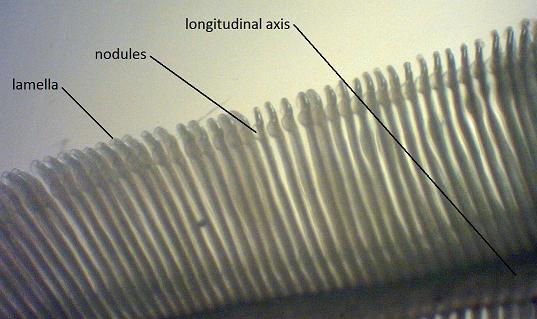Internal Anatomy
The respiratory system
The respiratory system of Ocypode species comprises one pair of lungs and seven pairs of lamellar gills (Greenaway and Farrelly 1984). Gills are enclosed within branchial chambers where respiratory gases are circulated (Ruppert et al. 2004). Gill lamellae extend from a longitudinal axis attached to the body and have thin, permeable cuticles that allow diffusion of gases into the blood stream (Ruppert et al. 2004).
The transition from a marine to a terrestrial environment was accomplished through adaptations for aerial gas exchange (Greenaway and Farrelly 1984). To support gills in the absence of water, marginal canals are thickened and provide rigidity to the gill architecture (Greenaway and Farrelly 1984). Additionally, nodules on gill lamellae (Fig 1) help maintain convective airflow by keeping lamellae widely separated and regularly spaced (Greenaway and Farrelly 1984).

Figure 1| Ocypode ceratophthalmus gill lamellae (approximately x20)
|